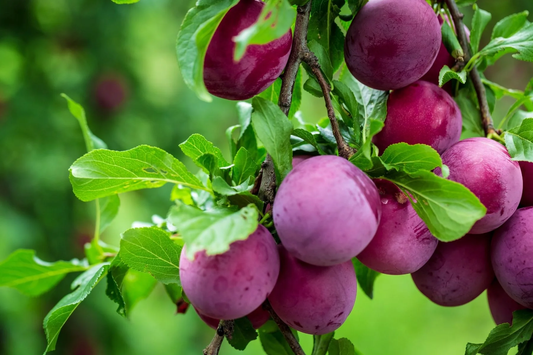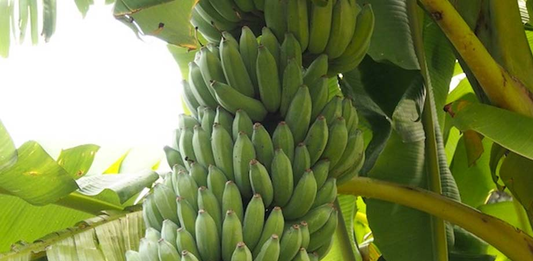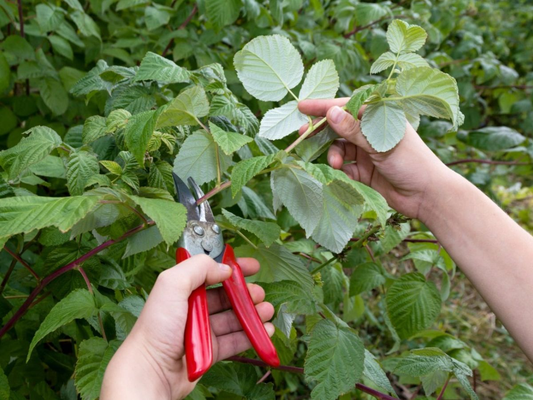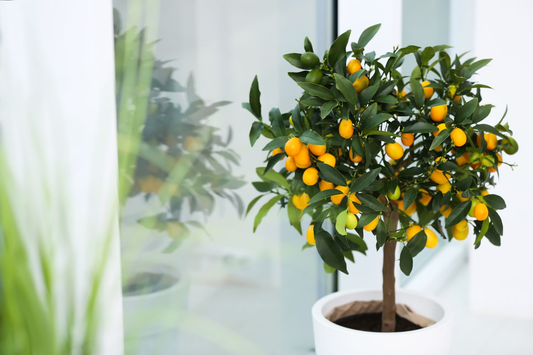How to Grow Beans from Seeds
Share
- 1. Introduction
- 2. Why Grow Beans from Seeds?
- 3. Understanding Bean Varieties
- 4. How to Prepare for Planting Beans
- 5. Planting Bean Seeds
- 6. Caring for Your Bean Plants
- 7. Dealing with Common Bean Plant Pests and Diseases
- 8. Harvesting Beans
- 9. Troubleshooting Bean Growth Problems
- 10. Tips for Growing Beans Successfully
- 11. FAQ – Frequently Asked Questions
1. Introduction
Growing beans from seeds is a rewarding and sustainable way to cultivate your own food. Not only is it easy and cost-effective, but it also provides you with fresh, nutritious beans throughout the growing season. Beans are one of the most versatile and easy-to-grow crops, making them a perfect choice for both beginner gardeners and seasoned horticulturists.
Here are some of the key benefits of growing beans from seeds:
- Cost-effectiveness: By growing your own beans from seeds, you save money compared to purchasing pre-grown plants or canned beans from the store.
- Freshness: Homegrown beans provide a superior taste and quality, harvested right when you need them.
- Health benefits: Beans are a rich source of protein, fiber, vitamins, and minerals, making them an excellent addition to any diet.
- Sustainability: Growing your own beans reduces the need for store-bought packaging and transportation, making it an eco-friendly choice.
- Easy to grow: Beans are relatively low-maintenance and can be grown in various environments, from large garden beds to smaller containers.
There are several types of beans that can be grown from seeds, each with its own unique growing habits and uses:
- Pole Beans: These beans grow vertically and require a trellis or other support system. They are ideal for small spaces and provide a higher yield over a longer period.
- Bush Beans: These beans grow in compact, bush-like plants and don’t require any support. They mature faster than pole beans, making them a great choice for beginners.
- Runner Beans: Known for their striking flowers and high yields, runner beans are great for ornamental gardening as well as food production.
- Lima Beans: A type of large, flat bean that’s commonly used in soups and stews. Lima beans need a warm growing environment.
Growing beans has several advantages beyond just their culinary uses. It helps with:
- Improving Soil Health: Beans are legumes, which means they can fix nitrogen in the soil, enriching it for future crops.
- Reducing Waste: Beans are often used in sustainable, zero-waste farming practices, as their growing cycle doesn't require a lot of chemical inputs.
- Supporting Biodiversity: Bean plants provide habitats for beneficial insects like pollinators, helping to maintain a balanced ecosystem in your garden.
In the following sections, we will explore the steps to successfully grow beans from seeds, from soil preparation to harvesting, so you can enjoy the many benefits of homegrown beans.

2. Why Grow Beans from Seeds?
Growing beans from seeds offers numerous advantages compared to purchasing pre-grown plants. Below are some of the key benefits of starting your bean garden from scratch:
- Cost Savings: Buying bean seeds is significantly cheaper than purchasing seedlings or pre-grown plants. A small investment in seeds can yield a large crop, providing plenty of beans for your meals throughout the season.
- Variety Options: When growing beans from seeds, you have access to a wider range of varieties. You can select from heirloom, organic, or unique bean varieties that may not be available as mature plants in stores.
- Satisfaction of Growing Your Own Food: There’s a special sense of accomplishment that comes from planting a seed and watching it grow into a thriving bean plant. This process offers not only fresh food but also a rewarding gardening experience.
In addition to the practical and emotional benefits of growing beans, there are also significant nutritional advantages:
- Higher Nutrient Quality: Homegrown beans are fresher and retain more nutrients than store-bought ones, which can lose nutritional value over time during transport and storage.
- Natural Growth: Beans grown in your own garden are free from the pesticides and chemical fertilizers commonly used in commercial agriculture, making them a healthier choice for you and the environment.
- Rich in Protein and Fiber: Beans are an excellent source of plant-based protein and fiber, essential nutrients for a balanced diet, and they can help lower cholesterol, improve digestion, and support overall health.
3. Understanding Bean Varieties
There are several different types of beans to consider when planning your garden, each with its own unique characteristics, growing habits, and care requirements. Understanding these differences will help you choose the best varieties for your space and needs:
- Pole Beans: These beans grow vertically, requiring a support structure like a trellis or fence. They tend to produce high yields over a longer period, making them ideal for maximizing garden space.
- Bush Beans: Bush beans are compact and don’t require any support, making them an excellent choice for smaller gardens or containers. They have a shorter growing season but provide a quick harvest.
- Runner Beans: Known for their beautiful, ornamental flowers, runner beans are often grown as decorative plants. They require more maintenance and a sturdy support structure but add a vibrant touch to your garden.
- Dry Beans: Dry beans, such as kidney or black beans, are harvested for storage and preservation. These beans require a longer growing time and need to be cured properly after harvesting to prevent spoilage.
- Lima Beans: Lima beans, also known as butter beans, grow larger than many other bean varieties. They require a warm growing environment and need plenty of space to thrive.
Each variety has its strengths and weaknesses. Here's a quick comparison to help you decide which type of bean is best suited for your needs:
| Bean Type | Pros | Cons | Best For |
|---|---|---|---|
| Pole Beans | High yield, space-saving, produces over time | Requires support structure | Vertical gardens |
| Bush Beans | Compact, no trellis needed | Smaller yield, shorter growing season | Small gardens |
| Runner Beans | Ornamental, attractive flowers | Requires more maintenance | Decorative gardens |
| Dry Beans | Storage for winter, hearty varieties | Longer growing time, needs curing | Storage/Preserving |
Choosing the right bean variety depends on the space you have available, the time you can dedicate to maintenance, and your gardening goals. Whether you're looking for high yields, ornamental beauty, or long-term storage, there is a variety suited to every need.

4. How to Prepare for Planting Beans
Successfully growing beans begins with proper preparation. Choosing the right location, preparing the soil, and timing your planting are all critical steps to ensure healthy bean plants and a productive harvest. Here’s how you can prepare for planting beans:
-
Choosing the Right Location:
- Sunlight: Beans thrive in full sunlight, so choose a location that receives at least 6 to 8 hours of direct sunlight daily. Beans are sun-loving plants, and adequate sunlight will ensure strong growth and high yields.
- Soil Type: Beans prefer well-drained soil with good structure. Sandy loam or loamy soil works best. Avoid areas where water tends to collect, as beans do not tolerate waterlogged conditions.
-
Soil Preparation:
- How to Test Soil: Before planting, it’s important to test your soil’s quality. You can use a home soil test kit or send a sample to a local agricultural extension office to get accurate results. Testing will help you understand your soil’s nutrient levels and pH.
- Ideal pH and Soil Fertility: Beans prefer slightly acidic to neutral soil, with a pH range of 6.0 to 7.0. Ensure your soil is rich in nutrients like nitrogen, phosphorus, and potassium to promote healthy growth. Beans are nitrogen-fixing plants, meaning they help enrich the soil, but they still need a good base of nutrients to start with.
- Improving Soil Quality: If your soil is heavy clay or lacking in nutrients, you can improve it by adding organic matter like compost, well-rotted manure, or peat moss. This will improve drainage and increase soil fertility.
-
Timing: When to Plant Beans for Optimal Growth:
- Indoor vs. Outdoor Planting: Beans can be started indoors in seed trays 2 to 3 weeks before the last expected frost if you have a short growing season. However, beans are generally best planted directly outdoors after the threat of frost has passed and the soil has warmed up.
- Ideal Temperature Ranges: Beans grow best in warm temperatures. The ideal temperature range for bean seeds to germinate is between 70°F and 90°F (21°C - 32°C). Plant beans outdoors once the soil temperature is consistently above 60°F (16°C).
5. Planting Bean Seeds
Planting bean seeds correctly is essential for successful growth and a bountiful harvest. Below is a step-by-step guide to help you plant your beans properly and ensure they thrive:
-
Step-by-Step Guide on How to Plant Bean Seeds:
-
Spacing and Depth for Planting:
- For pole beans, plant seeds about 1 to 1.5 inches deep and space them 3 to 4 inches apart. Provide at least 3 feet of space between rows to allow vines to climb.
- For bush beans, plant seeds 1 to 1.5 inches deep with 2 to 3 inches between seeds. Space rows about 12 to 18 inches apart to allow for proper air circulation.
-
Proper Seed Handling and Placement:
- Handle bean seeds gently to avoid damaging them. Place each seed in the hole and cover lightly with soil. Ensure the seed is not buried too deep to avoid difficulty in germination.
- If planting multiple varieties, be sure to label each row or section to prevent confusion later in the season.
-
Watering Tips and Techniques for Germination:
- Water the seeds immediately after planting to moisten the soil and encourage germination. Be careful not to overwater, as beans do not like soggy conditions.
- Keep the soil evenly moist during the germination process. Beans typically germinate in 7 to 14 days, depending on temperature and soil moisture.
-
Spacing and Depth for Planting:
-
How to Ensure Proper Drainage and Soil Aeration:
- Beans require well-drained soil, so ensure that your garden has proper drainage. If planting in containers, make sure they have drainage holes to prevent waterlogging.
- To improve soil aeration, incorporate organic matter like compost into the soil. This will help keep the soil loose and allow roots to grow freely.
-
Watering Schedules and Moisture Requirements:
- After planting, water the beans regularly to keep the soil moist but not soaked. Beans need about 1 inch of water per week, including rainfall, especially during the flowering and pod-setting stages.
- Avoid overhead watering, which can lead to disease. Instead, water at the base of the plant to keep the foliage dry.

6. Caring for Your Bean Plants
Caring for your bean plants throughout the growing season ensures they thrive and produce healthy, abundant crops. From providing support to addressing common issues, here’s what you need to do to care for your bean plants:
-
Providing Support for Climbing Beans:
- For pole beans, you will need to provide support as they grow vertically. This can be done using trellises, stakes, or a vertical garden system.
- Trellises: Install sturdy trellises that are at least 6 feet tall to support the climbing vines. You can use wooden, metal, or wire trellises based on your preference.
- Stakes: Place stakes next to each plant and gently tie the vines as they grow, allowing them to climb vertically without falling over.
-
Mulching to Retain Moisture and Suppress Weeds:
- Mulching helps to retain moisture, keep soil temperatures stable, and reduce the growth of weeds that compete with your beans for nutrients.
- Apply a 2 to 3-inch layer of organic mulch, such as straw, grass clippings, or shredded leaves, around the base of the plants.
- Be careful not to mulch too closely to the stems to prevent rot. Leave space around the base of each plant.
-
Pruning and Thinning Bean Plants:
- Pruning: While beans don’t require heavy pruning, you can remove any dead or damaged leaves to improve airflow around the plant and reduce the risk of disease.
- Thinning: For bush beans, if plants are too crowded, thin them to ensure good air circulation. Space them properly to avoid competition for sunlight and nutrients.
-
Fertilizing Beans During Growth:
- Beans are nitrogen-fixing plants, meaning they add nitrogen back into the soil. However, they still benefit from fertilization during growth.
- When to Fertilize: Fertilize your beans once they begin to set flowers and pods. Use a balanced, low-nitrogen fertilizer to support pod development without overwhelming the plants with excessive nitrogen.
- How to Fertilize: Apply the fertilizer around the base of the plant, following the manufacturer’s recommendations. Avoid getting fertilizer directly on the leaves or stems to prevent burning.
-
Common Issues to Watch Out For:
- Leaf Yellowing: If your bean plants' leaves turn yellow, it could be a sign of nutrient deficiencies (usually nitrogen) or overwatering. Check soil moisture and consider adding a balanced fertilizer.
- Pests: Beans are susceptible to aphids, whiteflies, and bean beetles. Inspect plants regularly and remove pests by hand or use insecticidal soap if necessary. Keep the garden free from debris to discourage pests.

7. Dealing with Common Bean Plant Pests and Diseases
Bean plants are susceptible to a variety of pests and diseases that can interfere with their growth and reduce yields. Knowing how to identify and manage these issues can help ensure a healthy harvest. Here’s what you need to know about pests, diseases, and control methods:
-
Common Pests that Affect Bean Plants and How to Manage Them:
-
Aphids, Beetles, and Mites:
- Aphids feed on the sap of bean plants and can cause leaves to curl and yellow. Beetles and mites can also damage leaves and pods, leaving behind holes or spots.
- Management: You can remove aphids by spraying a mixture of water and dish soap. For beetles and mites, try using neem oil or insecticidal soap to control infestations.
-
Slugs and Snails:
- Slugs and snails feast on young bean seedlings, leaving behind large holes in the leaves. They are particularly active in moist conditions.
- Management: Set up barriers using diatomaceous earth around plants. You can also place beer traps to attract and drown slugs and snails.
-
Cutworms:
- Cutworms are larvae that hide in the soil during the day and come out at night to chew through stems near the soil line, causing plants to collapse.
- Management: Place a collar made of cardboard or plastic around the base of each plant to prevent cutworms from reaching the stems.
-
Aphids, Beetles, and Mites:
-
How to Identify Bean Plant Diseases:
-
Rust, Mold, and Blight:
- Rust typically appears as orange or red spots on the leaves. Mold and blight often cause yellowing leaves, dark spots, or wilting, and can spread quickly under humid conditions.
- Management: Remove infected leaves and dispose of them to prevent further spread. Fungicides can also be used to control these diseases, but be sure to follow label instructions for safety.
-
Rust, Mold, and Blight:
-
Preventative Measures and Treatment Options:
- Prevention: Start with healthy seeds, space your plants properly, and rotate crops to reduce the risk of pests and diseases.
- Treatment: Regularly inspect plants for early signs of pests and diseases. Use organic sprays, neem oil, or insecticidal soap to manage outbreaks. For fungal issues, ensure good air circulation around your plants and avoid overhead watering to reduce moisture on the leaves.
-
Natural and Organic Methods for Pest and Disease Control:
- Neem Oil: An effective natural insecticide that works on a wide variety of pests and fungi.
- Garlic and Chili Spray: A homemade solution that can repel insects when sprayed on the leaves.
- Diatomaceous Earth: A natural powder that can be sprinkled around plants to deter slugs, snails, and insects.
8. Harvesting Beans
Harvesting beans at the right time is crucial for maximizing yield and ensuring the best quality beans. Whether you are harvesting fresh beans for immediate use or dry beans for storage, the process requires some care to ensure you get the most out of your crop. Here’s what you need to know:
-
When to Harvest Beans: Signs of Maturity for Different Types of Beans
- Fresh Beans: For varieties like bush beans and pole beans, the pods should be firm, and the seeds inside should not yet be fully developed. The pods will be green and tender, and can be harvested by hand when they snap easily.
- Dry Beans: For dry beans, such as lima beans or kidney beans, the pods will turn brown and brittle. When you gently shake the pod and hear the seeds rattling inside, it’s time to harvest. The seeds should be fully mature, hard, and dry.
-
How to Properly Harvest Beans for Maximum Yield
- Harvesting Fresh Beans: Simply pick the pods by hand when they are tender, ensuring you don’t damage the plant. Cut the stems carefully to avoid injury to the plant’s root system. Pick beans regularly to encourage further growth.
- Harvesting Dry Beans: For dry beans, it’s best to wait until the pods are completely dry. Use pruning shears to cut off the plant’s stems. Hang the plants upside down in a cool, dry area, allowing the beans to fully mature and dry before removing the pods.
-
Drying and Storing Beans for Long-Term Use
- Curing Beans: After harvesting dry beans, cure them by removing the beans from the pods and laying them out to dry further in a well-ventilated area. It’s important to cure beans until they are completely dry, as this ensures they will store well.
- Storage: Store dried beans in airtight containers in a cool, dry place. Beans can last for up to a year if stored properly. Use glass jars or Mylar bags for long-term storage to prevent moisture and pests.

9. Troubleshooting Bean Growth Problems
Even with proper care, bean plants can sometimes face growth problems. Knowing how to identify and fix these issues can help ensure a healthy harvest. Here’s how to address common growth problems in your bean plants:
-
Common Growth Issues and How to Fix Them:
-
Poor Germination Rates:
- If your bean seeds aren’t sprouting, the cause could be too cold soil, overly wet conditions, or old seeds. Beans generally require soil temperatures of 70°F to 90°F (21°C to 32°C) for optimal germination.
- Solution: Ensure the soil is warm enough and well-drained. Use fresh seeds, and consider pre-soaking them overnight before planting to improve germination rates.
-
Stunted Growth or Yellowing Leaves:
- Yellowing leaves can be a sign of nutrient deficiencies, particularly nitrogen, or it could indicate overwatering or poor soil drainage. Stunted growth may also result from inadequate sunlight or space.
- Solution: Check soil drainage and watering practices. Provide a balanced fertilizer if necessary and ensure your plants receive at least 6-8 hours of direct sunlight per day.
-
Poor Yield Despite Healthy Plants:
- If your plants are healthy but producing few beans, it could be due to insufficient pollination, overcrowding, or inappropriate plant varieties for your climate.
- Solution: Ensure proper spacing between plants, and consider planting varieties suited to your climate. You may also need to attract more pollinators by planting flowers nearby.
-
Poor Germination Rates:
-
Addressing Environmental Challenges:
- Temperature Fluctuations: Beans thrive in consistent temperatures. Extreme heat or frost can stress the plants, resulting in poor growth or failure to produce beans.
- Soil Issues: Poor soil pH, compacted soil, or nutrient imbalances can limit growth. Beans prefer slightly acidic to neutral soil (pH 6-7).
- Solution: Consider using row covers to protect beans from extreme temperatures, and amend the soil with organic compost or well-balanced fertilizers to improve soil health.
-
Preventive Measures for Future Plantings:
- Crop Rotation: Avoid planting beans in the same spot year after year to reduce soil-borne diseases and pest build-up.
- Proper Watering: Ensure beans are watered deeply and evenly. Over-watering or inconsistent watering can lead to root rot and poor growth.
- Soil Testing: Test your soil before planting to address any nutrient imbalances or pH issues early.
10. Tips for Growing Beans Successfully
Growing beans can be an easy and rewarding experience, especially with the right approach. Here are some expert tips to help you grow beans successfully:
-
Best Practices for Beginners Growing Beans:
- Start with easy-to-grow varieties like bush beans or pole beans.
- Plant beans in well-drained, fertile soil with plenty of sunlight (at least 6-8 hours a day).
- Space plants adequately to allow for air circulation and proper growth.
-
Maximizing Yield with Proper Care:
- Water consistently, ensuring the soil is moist but not waterlogged.
- Apply mulch around the base of plants to retain moisture and suppress weeds.
- Fertilize as needed with a balanced fertilizer, especially if the leaves turn yellow.
-
Growing Beans as Companion Plants with Other Crops:
- Beans are great companion plants for crops like corn and squash. Beans fix nitrogen in the soil, benefiting their neighboring plants.
- Consider growing beans with the "Three Sisters" method: beans, corn, and squash, which support each other’s growth.
-
How to Save Seeds for Future Planting:
- Allow bean pods to dry fully on the plant before harvesting the seeds.
- Store saved seeds in a cool, dry place, preferably in an airtight container to protect them from moisture and pests.
11. FAQ – Frequently Asked Questions
Here are some frequently asked questions about growing beans, with answers to help you overcome common challenges and make the most of your bean-growing experience:
-
1. How long does it take for bean seeds to sprout?
- Bean seeds generally take 7 to 10 days to sprout, depending on the temperature and moisture levels. Warmer soil temperatures (70°F to 90°F or 21°C to 32°C) can speed up the germination process.
-
2. Can beans be grown in containers or pots?
- Yes, beans can be successfully grown in containers, especially bush beans and dwarf varieties. Ensure the container has good drainage and is large enough to allow proper root growth (at least 12 inches deep).
-
3. What is the best time of year to plant beans?
- The best time to plant beans is after the last frost when the soil has warmed to at least 60°F (15°C). For most regions, this means planting in late spring or early summer.
-
4. How do I know when my beans are ready to harvest?
- Beans are ready for harvest when the pods are fully developed, and the beans inside are firm and fully grown. For fresh beans, harvest when the pods are tender. For dry beans, wait until the pods are dry and brittle, then remove the beans and let them cure.
-
5. Can I grow beans indoors during winter?
- Yes, beans can be grown indoors during winter if you have a sunny spot or a grow light. Choose compact varieties like bush beans for limited indoor space.
-
6. How do I store beans for the winter or longer shelf life?
- After harvesting dry beans, let them cure in a cool, dry place. Store them in airtight containers, such as glass jars, and keep them in a dark, cool location to ensure maximum shelf life.
-
7. What should I do if my beans have yellow leaves?
- Yellow leaves can indicate a nitrogen deficiency, overwatering, or pest issues. Ensure proper soil drainage, avoid overwatering, and consider applying a balanced fertilizer to restore nutrients.
-
8. How can I prevent pests from attacking my bean plants?
- To prevent pests, practice crop rotation, use companion planting (like planting beans with garlic or marigolds), and encourage natural predators like ladybugs. Organic insecticidal soaps can also help keep pests at bay.




